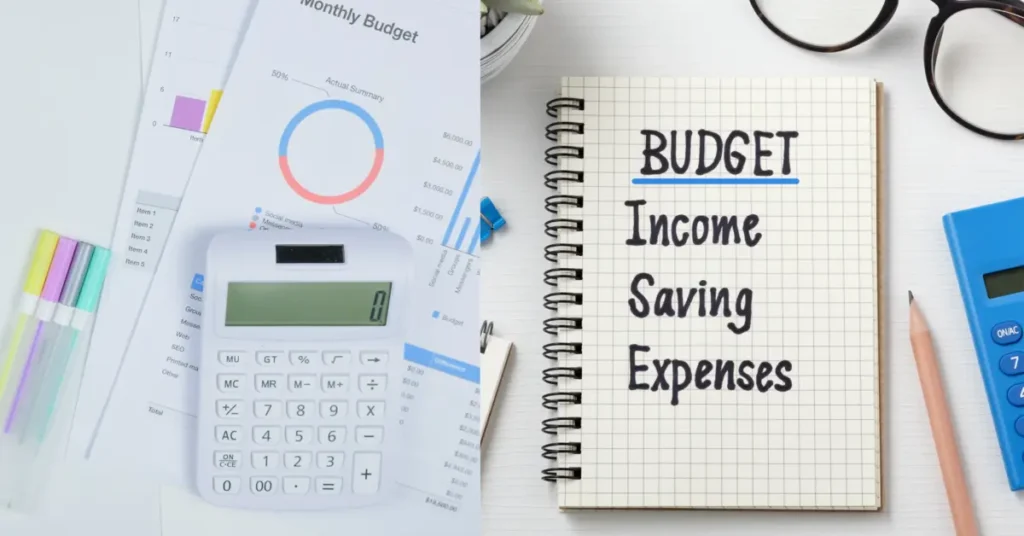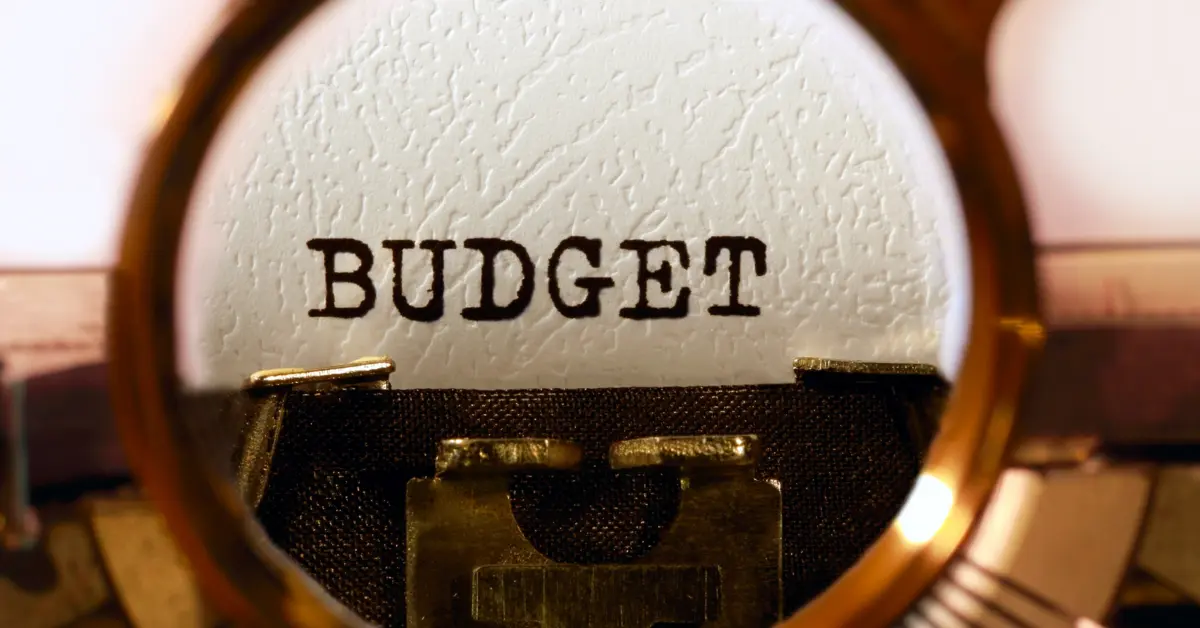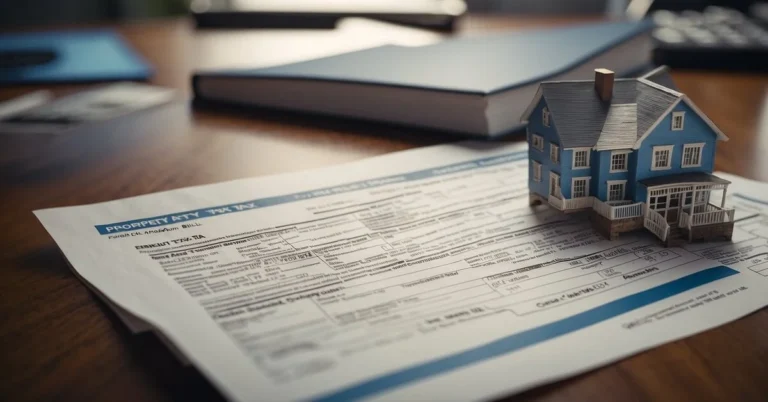Budgeting for dummies is all about making money management straightforward and accessible, no matter your financial know-how. Starting with a simple budget changed my financial life, offering clarity on spending and saving. It’s more than a monthly task; it’s a stepping stone to bigger financial goals. The best part? The peace of mind knowing where your money goes, avoiding surprises, and guiding you towards debt repayment, savings, or just smarter spending.
Budgeting for Dummies – Underst Your Financial Situation
When tackling “budgeting for dummies,” I’ve learned it’s crucial first to get a grasp on where I stand financially. This means taking a clear-eyed look at my income and expenses.
Assessing Your Income
My first step is to determine my monthly income. This is the total amount of money I bring home after taxes are taken out, also known as my take-home pay or after-tax income. It includes salaries, wages, tips, and any other sources of income. I list each income source and add them up to understand my total monthly income.
Categorizing Your Expenses
Next, I divide my monthly expenses into categories, such as:
- Fixed Expenses:
- Rent/Mortgage: $1,200
- Auto Loan: $350
- Insurance: $250
- Variable Expenses:
- Groceries: $400
- Gas: $100
- Entertainment: $150
This helps me see exactly where my money goes each month and which areas might offer an opportunity for savings.
Setting Up Your Budget

When I first tackled budgeting for dummies, I realized it’s all about making a plan that works for you and sticking to it. Let’s dive into setting up a system that will help manage your money effectively.
Choosing a Budgeting Method
The first step is settling on a method that best fits my lifestyle and financial goals. For some, the envelope system, where cash is divided into envelopes for different spending categories, ensures they don’t overspend. Others might opt for a zero-based budget, which allocates every dollar of income to a specific category, whether that’s bills or savings. The 50/30/20 budget is a straightforward method where I allocate 50% of my income to essentials, like rent and groceries; 30% to wants, such as dining out; and 20% to savings or paying off debt.
Allocating Funds to Categories
Once I’ve chosen a method, it’s time to break down my expenses into categories. Here’s a simple way to visualize it:
- Fixed Expenses: These are monthly bills that don’t change much, like rent or insurance.
- Variable Expenses: These are costs that can vary, like utilities or groceries.
- Discretionary Spending: This is the fun part—money I can spend on anything I want.
Here’s how to start:
Fixed Expenses
- Rent/Mortgage: $800
- Utilities: $200
- Internet: $60
Variable Expenses
- Groceries: $300
- Gas: $150
Discretionary Spending
- Dining Out: $100
- Entertainment: $80
Savings
- Emergency Fund: $150
- Vacation: $50
Creating a budget is really about balancing my money across these categories to stay on track with my financial plan, making sure I cover my essentials, while still putting something away for savings.
Managing Your Savings
When it comes to budgeting for dummies, managing your savings effectively is a crucial skill. Let’s discuss how to safeguard your future finances and set achievable targets.
Creating an Emergency Fund
Establishing an Emergency Fund is the first step in securing a financial safety net. This fund acts as a buffer against unexpected expenses such as medical bills, car repairs, or job loss. Here’s how I recommend starting:
- Determine the amount needed: Aim for three to six months of living expenses.
- Start small: Even saving a little bit, like $20 from each paycheck, can help.
- Open a separate account: Keep your emergency fund in a savings account to avoid the temptation to spend it.
Setting Savings Goals
Next, we should talk about Setting Savings Goals. This is where you define what you’re saving for, which could include a vacation, a new home, or retirement savings. Here’s my strategy:
- Specify your goals: Write down clear and precise savings goals.
- Prioritize: Decide which savings goals are most important and allocate funds accordingly.
- Automatic transfers: Utilize pay yourself first by setting up automatic transfers to your savings account on payday.
By focusing on emergency funds and specific savings goals, you are laying the groundwork for a bright financial future. Remember, starting is the most important step.
Controlling Monthly Outflows

When I first tackled budgeting for dummies, I realized the smart management of monthly expenses was crucial. Here are specific strategies to keep your regular spending in check.
Housing and Utilities
My rent or mortgage often takes the biggest slice of my monthly budget. To control this cost, I consider refinancing my mortgage for a lower rate or relocating to a more affordable area. For utilities, insulating windows and fixing leaks can reduce my bills. Additionally, using energy-efficient appliances and unplugging electronics when not in use can offer more savings.
Food and Groceries
I plan my meals weekly and stick to a shopping list to avoid impulsive buys. Buying generic brands and shopping for groceries during sales helps me save. Moreover, cooking at home rather than dining out has significantly reduced my food expenses.
Transportation Expenses
To spend less on gas, I use public transit when possible, carpool, or consider a more fuel-efficient vehicle. Regular vehicle maintenance also prevents costly repairs and improves fuel economy. If I live close to work, biking or walking can be great cost-saving and healthy alternatives.
Insurance and Health Care
Choosing the right insurance plans is pivotal. I compare plans annually to ensure I’m getting the best rate for my health, auto, and renters insurance. For health care costs, I use a Flexible Spending Account (FSA) or Health Savings Account (HSA) to pay for eligible expenses with pre-tax money, which saves me dollars.
Minimizing Debts
When I first dove into budgeting for dummies, I quickly realized that reducing debts was a vital component. Keeping debt under control not only improves your financial situation but also brings a sense of relief and control over your finances.
Strategies for Debt Repayment
The first step in managing debt is to create a clear repayment plan. One popular strategy is the debt snowball method, which involves paying off debts from smallest to largest, gaining momentum as each balance is wiped out. This approach can be greatly satisfying because it allows for small victories along the way, which can motivate you to continue.
Debt avalanche is another method where you pay off debts with the highest interest rates first. This method can save you money on interest over time. It’s crucial to:
- List all your debts.
- Prioritize them by interest rate or balance.
- Commit to a consistent monthly payment.
Understanding Credit and Loans
Understanding the terms of your credit cards and loans is essential for effective debt management. Always read the fine print to know your interest rates and terms. Here’s what to consider:
- Interest Rates: Look for opportunities to transfer balances to lower interest rate accounts.
- Payment Terms: Make payments on time to avoid additional fees and credit score damage.
- Loan Conditions: Refinance or consolidate loans if it results in lower interest rates and/or payments.
Remember, successful debt management and repayment play a critical role in financial health and lay the groundwork for a robust personal budget.
Planning for Irregular Income
When it comes to budgeting for dummies like me, facing the ebb and flow of irregular income can be tricky. Whether you’re a freelancer, diving into a side hustle, or working a job with variable overtime, your financial planning requires a different approach.
Budgeting with Irregular Income
To successfully manage irregular income, I start by identifying my baseline needs. It’s crucial to know the minimum amount required each month to cover all essential expenses. Here’s a simple table I use to break it down:
| Month | Essential Expenses | Actual Income | Difference |
|---|---|---|---|
| Jan | $2000 | $2500 | +$500 |
| Feb | $2000 | $1800 | -$200 |
| Mar | $2000 | $2200 | +$200 |
I make sure to set up my budget based on the lowest income month to avoid any nasty surprises. Experts at Ramsey Solutions recommend this strategy as a solid foundation. This way, I’m never caught off guard and can manage my finances smoothly.
Next, I create a list to prioritize expenses:
- Housing and utilities
- Groceries
- Insurance
- Transportation
Non-essential expenses like dining out or entertainment are at the bottom of the list, making it easy to adjust if my income fluctuates.
Adjusting for Windfalls and Shortfalls
With the unpredictable nature of a side hustle or freelancer work, there will be times when I earn more than expected—these are windfalls. The Budget Mom suggests treating this extra cash wisely. Here’s what I do: I allocate half of any windfall to paying off debts or savings, and the other half goes toward future shortfalls. This helps me stay afloat during leaner months.
On the other hand, when shortfalls occur, I turn to my list of expenses and make adjustments. I pause non-critical expenses and find ways to reduce costs, like using public transportation instead of driving. Bankrate offers insightful tips here on how to navigate through periods when income is lower than expected.
Dealing with irregular income demands diligence and a bit of creativity, but with these strategies, I keep my finances in check without much stress.
Lifestyle and Spending

When I first tackled budgeting for dummies, I quickly learned that my lifestyle choices had a direct impact on my financial health. This section will touch on how leisure activities, discretionary spending, and generosity can shape your budget.
Entertainment and Leisure
I find setting aside money for fun is essential; it prevents me from feeling deprived. When sorting my entertainment budget, I categorize my expenses:
- Movies/Streaming Services: $40/month
- Eating Out: $100/month
- Hobbies: $50/month
By clearly defining these categories, I can indulge responsibly without impeding my savings goals.
Managing Discretionary Expenses
For discretionary expenses, I use the envelope system: I allocate a set amount of cash for these costs at the beginning of the month. Here’s my typical breakdown:
- Shopping: $150
- Tech Gadgets: $50
- Miscellaneous: $50
If I’m tempted to overspend, the empty envelope signals me to stop.
Gifts and Giving
I believe in giving back, whether for birthdays, holidays, or charity. To manage gifts and giving, I:
- Set a yearly total gift amount: $200
- Divide by 12 for a monthly budget: $16.67/month
I also earmark a small percentage of my income for charitable donations, ensuring I’m financially and emotionally invested in my community.
Budgeting Techniques and Tools
When I first grappled with budgeting for dummies, I quickly realized the success of managing finances lies in the techniques and tools I use. From user-friendly apps to time-tested systems, navigating the world of personal finance becomes a lot simpler. Let’s look at some specifics that can help to stay on track.
Using Budgeting Apps and Software
Budgeting apps and software can be a game-changer. I found that by using a budgeting app, adherence to my financial goals improved significantly. These tools typically allow for real-time tracking of expenses and can suggest budgeting methods that match my lifestyle. For instance, apps, like You Need a Budget (YNAB), help implement zero-based budgeting—a method where every dollar is assigned a job, ensuring no money is wasted. This technique requires categorizing and monitoring all income and expenses so that income minus outgo equals zero by the end of the month.
The Envelope System
Alternatively, the classic envelope system has been a revelation. With cash envelopes labeled for different expense categories, I physically divide my cash for monthly expenses, which helps prevent overspending. While this approach might seem old school, it’s incredibly effective for visual learners like me and makes tangible the abstract concept of digital numbers. For non-cash expenses, a virtual envelope budget system can be applied using certain apps that simulate this method, keeping the essence of disciplined spending without cash.
By incorporating these tools and techniques into your budgeting plan, not only do you gain clarity about your financial habits, but also take solid steps towards a better financial future.
Maintaining Financial Discipline
When it comes to budgeting for dummies, I find that the cornerstone of a solid financial plan lies in discipline—specifically, in sticking to a spending plan. Let’s explore how to steer clear of common pitfalls and keep our budgets in check.
Avoiding Temptations and Overspending
It’s easy to get swept up in the allure of impulse buys, but they can quickly derail our financial goals. To help combat this:
- Make a list: Before I shop, I jot down exactly what I need. This keeps me focused and helps curb unnecessary purchases.
- Wait it out: If I’m tempted by a non-essential item, I’ll wait at least 24 hours before buying it. Often, the urge to splurge fades.
Periodic Review and Adjustment
A budget isn’t set in stone; it requires regular tweaking to ensure it aligns with my lifestyle. Every month, I:
- Review receipts: I scrutinize my receipts to see where my money went versus where I planned to spend it.
- Adjust margins: If I notice a pattern of overspending in one category, I adjust the margins of my budget to reflect my actual spending or to tighten up that area.
By routinely checking in with my financial activity, I maintain the flexibility necessary to handle life’s unpredictable swings while keeping my spending on course.
Planning for Long-Term Success
When I first learned about “budgeting for dummies,” I discovered it’s more than just tracking daily expenses. It’s about mapping out my financial future. Here’s how to lay the groundwork for long-term success.
Setting Financial Goals
My journey towards financial stability began by establishing clear financial goals. I listed my dreams that required money, such as buying a home or securing retirement. For each, I set specific, measurable, achievable, relevant, and time-bound (SMART) objectives. For example, I decided to save $40,000 for a down payment on a house in five years.
Miscellaneous Considerations

When it comes to budgeting for dummies, I’ve found that it’s the small things that can trip you up. Let’s iron out those less obvious areas to keep your budget in check.
Dealing with Subscriptions and Memberships
We all have those little monthly charges for subscription services that seem negligible individually but can add up. My advice? List every subscription you have—Netflix, Spotify, that app you forgot you’re still paying for. Review each one and ask yourself, “Have I made use of this recently?” If not, it’s time to cancel. It’s essential to monitor these subscriptions within the miscellaneous line of your budget to prevent them from draining your resources.
Creating Buffers for Unexpected Expenses
Life loves to throw curveballs, and your budget should be ready to catch them. A buffer—think of it as a financial grace period—is money set aside in your budget for unexpected expenses. These extras often aren’t so extra; they’re just unplanned. So, I ensure to earmark a portion of my monthly income for these surprises. It’s a relief to have this safety net when, not if, these expenses come up.
Special Budgeting Considerations
When I first started diving into budgeting for dummies, I quickly realized that not all budgets are created equal. Special circumstances often call for special budgeting considerations to ensure financial stability. Here’s what you need to keep in mind:
The Four Walls
First up, prioritizing the “four walls” is essential. These are your:
- Housing: Rent or mortgage
- Utilities: Water, gas, electric, etc.
- Food: Groceries and necessary dining
- Transportation: Car payments, gas, public transportation
By making sure these are covered, I know I have a foundation for my monthly budget.
Sinking Funds
For expenses that aren’t monthly but will inevitably come, such as Christmas gifts or car repairs, sinking funds are a game-changer. I set aside a small amount every month so that when the time comes, I’m not caught off guard.
| Item | Monthly Contribution |
|---|---|
| Holiday Gifts | $20 |
| Car Maintenance | $30 |
| Annual Subscriptions | $10 |
Frequently Asked Questions
What are the rules for budgeting for beginners?
For those just starting, the 50/30/20 rule can be an excellent guideline. This rule suggests allocating 50% of your income to necessities, 30% to wants, and 20% to savings and debt repayment.
What are the 5 tips for budgeting?
Here are five actionable tips to help you manage your finances:
- Know your net income.
- Track your spending meticulously.
- Set realistic and specific financial goals.
- Plan for the unexpected with an emergency fund.
- Periodically review and adjust your budget as needed.
What are the questions for budgeting?
When budgeting, ask yourself: What are my financial goals? How does my current spending align with those goals? What expenses are necessary and which can I reduce? How much should I save monthly?
When should you start budgeting?
The best time to start budgeting is now. Whether you’re dealing with a paycheck or a more irregular income, starting a budget now lays the groundwork for a healthier financial future.
I hope you found some inspiration or useful tips in our article on ’budgeting for dummies’! If so, I’d love to hear your thoughts and ideas in the comments below! And if you’re looking for more insightful content, don’t hesitate to explore our other articles.
Your comments help us create better content for you. Happy reading!






